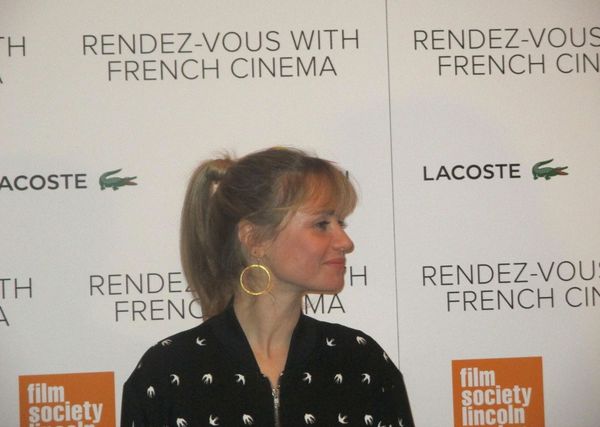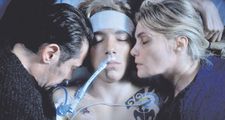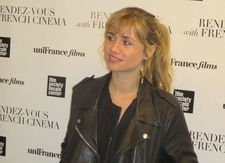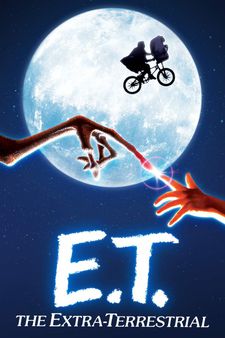 |
| Katell Quillévéré on Steven Spielberg's E.T. - The Extra Terrestrial: "For me it was something from my childhood ..." Photo: Anne-Katrin Titze |
The danger of living is lurking at every corner at the start of Katell Quillévéré's medical thriller Heal The Living (Réparer Les Vivants), co-written with Gilles Taurand, based on a novel by Maylis De Kerangal, starring Emmanuelle Seigner, Kool Shen (Catherine Breillat's Abus De Faiblesse with Isabelle Huppert), Tahar Rahim, Gabin Verdet, Théo Choldbi, and Finnegan Oldfield (Thomas Bidegain's Les Cowboys).
I first met Katell Quillévéré when she was presenting her film Suzanne, which stars Sara Forestier, Adèle Haenel, François Damiens, and Paul Hamy. Katell also participated, along with Julie Gayet, Axelle Ropert, Isabelle Giordano, Rebecca Zlotowski, Stacie Passon, Ry Russo-Young, Deborah Kampmeier, and Justine Triet, in activities at the French Institute Alliance Française on International Women’s Day during the 2014 Rendez-Vous with French Cinema in New York.
 |
| Simon (Gabin Verdet) with his parents Vincent (Kool Shen) and Marianne (Emmanuelle Seigner) |
In Heal The Living, we see the bike and the skateboard collide on the dark road only in our heads. The surfboards do not get swallowed up by the sea at dawn. 17-year-old Simon (Gabin Verdet) nevertheless will not survive for long. There are composite films where we follow objects changing hands - a suit, a yellow Rolls-Royce, a dollar bill, or traveling pants.
Katell Quillévéré's pulsating film about the importance of organ donation shows the ripple effect of this boy's accident. He is in a coma and declared brain-dead. His divorced parents, played by Emmanuelle Seigner (Marianne) and Kool Shen (Vincent) have to make the decision about his heart that is still beating only because of the machines it is hooked up to. Tahar Rahim is Thomas, the man at the hospital who organises organ transplants.
Claire (Anne Dorval), a stranger to the circumstances, living in another city, is waiting for a heart donor. She is the mother of Maxime (Finnegan Oldfield) and Sam (Théo Choldbi). Together they watch E.T. - The Extra-Terrestrial, and connect through the little hero with the Merguez fingers on more than one level.
On the opening night of the Rendez-Vous with French Cinema at the Film Society of Lincoln Center, Katell Quillévéré spoke with me about her metaphor for life and why E.T. - The Extra-Terrestrial was seen on screen.
 |
| Katell Quillévéré on the red carpet for Suzanne Photo: Anne-Katrin Titze |
Anne-Katrin Titze: I would like to ask you about the scene where sea and land merge visually. It's a fantastic image.
Katell Quillévéré: Thank you. Which image exactly are you speaking about?
AKT: In the car on the road when the wave is emerging from the land.
KQ: Okay. You know, what is special in this movie is, I think when you get to see the movie, you know that this young boy is going to die. But you don't know when or where he is going to die. So I was really asking myself how I'm going to tell that. Without being shocking in a way, or too distant to this accident.
So I had the idea to stay with the teenagers and to fall asleep with them. It's like something kind of dreamy. They have the sensations of the surf. They close their eyes and something from this sensation is coming again. It is also a metaphor for me of life, you know, this wave. It's like a matrix when you are surfing it is like inside…
AKT: The belly? Of the wave?
KQ: Yes, the belly. It gives life but it can also take life.
AKT: Also on another level, everybody who has ever spent a day in the ocean knows that feeling.
KQ: True.
AKT: That the rhythm of the sea stays with you on land.
 |
| E.T. - The Extra Terrestrial poster |
KQ: Like a washing machine in a way.
AKT: That's good. I never thought of it that way. Why did you choose E.T.? Why are the mother and her sons watching E.T.?
KQ: For me it was something from my childhood, a movie from my childhood. It has to do with the loss of innocence. And, you know, I wanted to speak about the idea that when you are watching a movie together when you're a family, it's so much easier to give your emotions away.
To have the same feelings, the same emotions for the departure of E.T. than to tell your own mother that you're scared to loose her. That she might die. It's a way to commune.
AKT: To merge?
KQ: Yes, to merge together. And it's also, you know, a metaphor in E.T. from the organ donation. Because the child and the alien are linked. When the child is feeling something, E.T. is feeling it also. And E.T. is dying. You know his heart is beating less and less and less. And then the child saves E.T.'s life. They are getting connected and everything. So I thought it was a great idea.
AKT: A perfect choice to include, actually.
KQ: Thank you.
Heal The Living (Réparer Les Vivants) will open in the US on April 14.
The uniFrance and Film Society of Lincoln Center's 22nd edition of Rendez-Vous with French Cinema in New York, runs through March 12. Screenings will take place at the Walter Reade Theater, Lincoln Center.





















